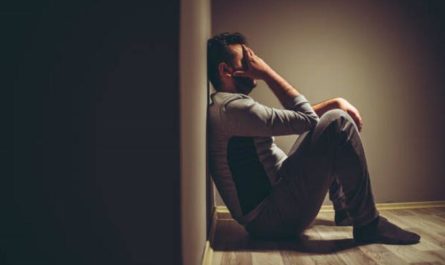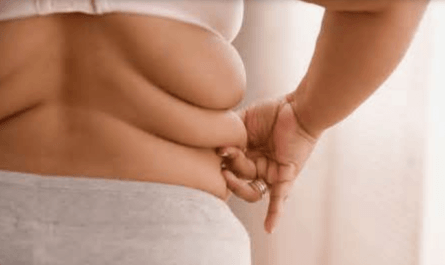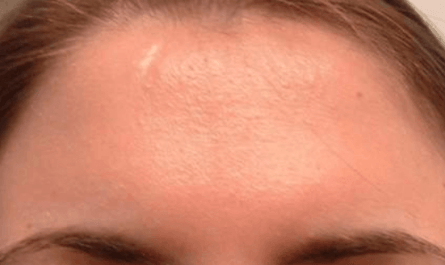Back pain and stomach cramps are two of the most common ailments that people experience. It often causes significant discomfort and disrupts daily life. While these symptoms can occur independently, they may also present simultaneously. While these symptoms are usually not a cause for serious concern. However, In some cases, this may also indicate an underlying health issue. So What causes back pain and stomach cramps at the same time? In this article, we’ll explore 14 potential causes of back pain and stomach cramps. In addition, we’ll also provide some practical tips for managing your symptoms at home.
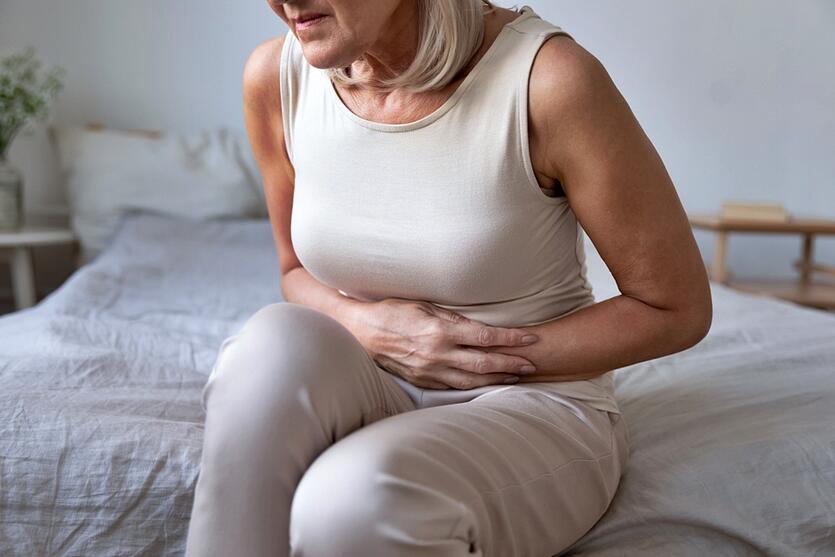
14 Causes of Back Pain and Stomach Cramps
1. Menstrual Cramps
For many women, menstrual cramps are a common cause of both back pain and stomach discomfort. During menstruation, the uterus contracts to shed its lining, which can cause cramping sensations in the lower abdomen and back. These cramps are usually most intense during the first few days of the menstrual period. It can be accompanied by other symptoms such as bloating, fatigue, and headaches.
Over-the-counter pain relievers like ibuprofen or acetaminophen can help alleviate menstrual cramps. Applying a heating pad to the lower abdomen or back can also provide relief. If menstrual cramps are severe or interfere with daily activities, it’s important to consult with a healthcare provider to rule out underlying conditions like endometriosis or uterine fibroids.
2. Constipation
Constipation is another common cause of abdominal discomfort and back pain. When stool becomes hard and difficult to pass, it can cause cramping sensations in the lower abdomen and referred pain in the back. Constipation can be caused by a variety of factors, including dehydration, lack of fiber in the diet, certain medications, and underlying health conditions.
Increasing fluid and fiber intake, engaging in regular physical activity, and using over-the-counter laxatives or stool softeners can help relieve constipation. If constipation is severe or persists despite home remedies, it’s important to consult with a healthcare provider.
3. Irritable Bowel Syndrome (IBS)
Irritable bowel syndrome (IBS) is a chronic digestive disorder that can cause abdominal pain, bloating, and changes in bowel habits. In some cases, IBS can also cause lower back pain.
The exact cause of IBS is unknown, but it is thought to be related to a combination of factors. This includes abnormal gut motility, increased gut sensitivity, and psychological factors like stress and anxiety.
Treatment for IBS typically involves a combination of lifestyle changes, such as avoiding trigger foods and managing stress, and medications to alleviate symptoms. Antispasmodics, antidepressants, and probiotics may be prescribed depending on the severity and nature of symptoms.
4. Kidney Stones
Kidney stones are hard deposits of minerals and salts that can form in the kidneys and cause severe pain as they pass through the urinary tract. The pain is often described as a sharp, cramping sensation in the lower back, side, or groin. Kidney stones can also cause abdominal pain, nausea, and frequent urination.
Treatment for kidney stones depends on their size and location. Small stones may pass on their own with the help of pain medication and increased fluid intake. Larger stones may require medical intervention, such as extracorporeal shock wave lithotripsy (ESWL) or surgical removal.
5. Urinary Tract Infections (UTIs)
Urinary tract infections (UTIs) occur when bacteria enter the urinary system and multiply, causing inflammation and irritation. UTIs can cause a range of symptoms, including abdominal pain, back pain, frequent and painful urination, and fever. Women are more prone to UTIs due to their shorter urethra, which allows bacteria to more easily reach the bladder.
Treatment for UTIs typically involves a course of antibiotics to eliminate the bacterial infection. Increasing fluid intake and practicing good hygiene can help prevent recurrent UTIs.
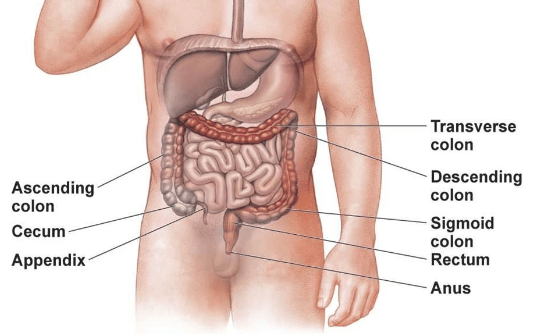
6. Appendicitis
Appendicitis is a serious condition that occurs when the appendix becomes inflamed and infected. It typically causes severe pain that starts around the belly button and then moves to the lower right side of the abdomen.
The pain may also radiate to the back or worsen with movement. Other symptoms of appendicitis include fever, nausea, vomiting, and loss of appetite.
Appendicitis is a medical emergency that requires immediate treatment. If left untreated, the appendix can rupture, leading to life-threatening complications. Treatment involves surgical removal of the appendix, known as an appendectomy.
7. Gallbladder Disease
The gallbladder is a small organ that stores and releases bile to aid in digestion. Gallbladder disease, such as gallstones or inflammation (cholecystitis), can cause abdominal pain that radiates to the back.
The pain is often described as a dull, cramping sensation in the upper right abdomen that may worsen after eating fatty or greasy foods.
Treatment for gallbladder disease depends on the underlying cause. Gallstones may be managed with pain medication and dietary changes or may require surgical removal of the gallbladder (cholecystectomy). Cholecystitis is typically treated with antibiotics and may also require gallbladder removal.
8. Pancreatitis
The pancreas is a gland that produces enzymes to aid in digestion and hormones to regulate blood sugar. Pancreatitis occurs when the pancreas becomes inflamed, causing severe abdominal pain that may radiate to the back. Other symptoms of pancreatitis include nausea, vomiting, fever, and rapid pulse.
Acute pancreatitis is typically caused by gallstones or heavy alcohol use and requires immediate medical attention. Treatment involves hospitalization, pain management, and intravenous fluids. Chronic pancreatitis may require ongoing management with pain medication, dietary changes, and enzyme supplements.
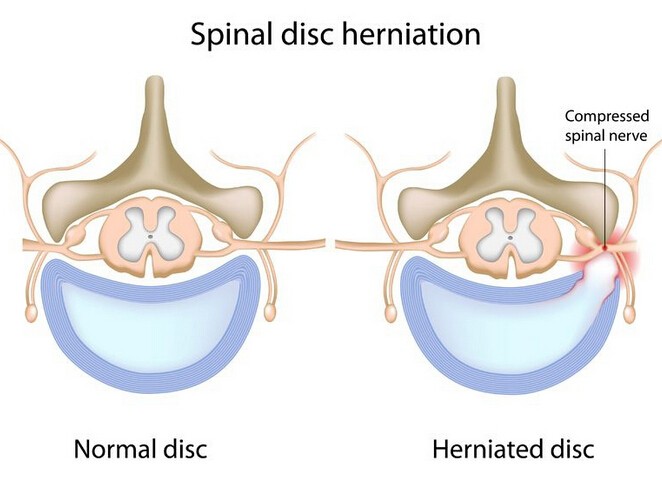
9. Herniated Disc
A herniated disc occurs when the soft, gel-like center of a spinal disc pushes through a tear in the tough outer layer. This can cause pressure on nearby nerves, leading to pain, numbness, and weakness in the back, legs, or arms.
A herniated disc in the lower back (lumbar spine) can cause sciatica, a type of pain that radiates from the lower back down one or both legs.
Treatment for a herniated disc depends on the severity of symptoms. Mild cases may improve with rest, pain medication, and physical therapy. More severe cases may require steroid injections or surgery to remove the damaged portion of the disc.
10. Spinal Stenosis
Spinal stenosis is a narrowing of the spaces within the spine that can put pressure on the spinal cord and nerves. It is often caused by age-related changes in the spine, such as osteoarthritis or thickening of the ligaments. Symptoms of spinal stenosis include back pain, leg pain or cramping, and numbness or weakness in the legs or feet.
Treatment for spinal stenosis may include pain medication, physical therapy, and lifestyle modifications such as maintaining good posture and avoiding activities that worsen symptoms. In severe cases, surgery may be necessary to create more space for the spinal cord and nerves.
11. Pelvic Inflammatory Disease (PID)
Pelvic inflammatory disease (PID) is an infection of the female reproductive organs, typically caused by sexually transmitted bacteria. PID can cause lower abdominal pain, back pain, abnormal vaginal discharge, and fever. If left untreated, PID can lead to serious complications such as infertility and ectopic pregnancy.
Treatment for PID involves a course of antibiotics to eliminate the bacterial infection. In severe cases, hospitalization may be necessary for intravenous antibiotics and monitoring. Practicing safe sex and getting regular STI screenings can help prevent PID.
12. Endometriosis
Endometriosis is a condition in which tissue similar to the lining of the uterus grows outside of the uterus, often on the ovaries, fallopian tubes, or other pelvic organs. This can cause severe pelvic pain, especially during menstruation, as well as back pain, painful intercourse, and infertility.
Treatment for endometriosis may include pain medication, hormonal therapies to suppress menstrual cycles, and surgery to remove endometrial tissue. Lifestyle changes such as exercise, stress management, and dietary modifications may also help alleviate symptoms.
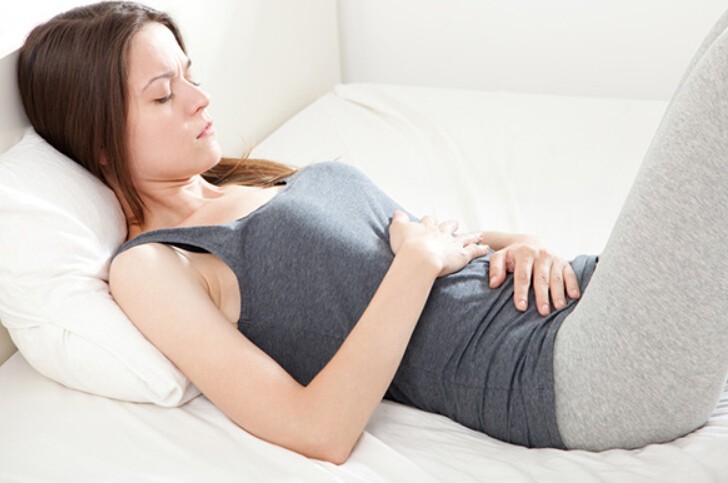
13. Gastritis
Gastritis is an inflammation of the stomach lining that can cause upper abdominal pain and discomfort. In some cases, the pain may radiate to the back. Other symptoms of gastritis include nausea, vomiting, bloating, and indigestion. Gastritis can be caused by a variety of factors, including bacterial infection, excessive alcohol use, and certain medications.
Treatment for gastritis depends on the underlying cause. Antibiotics may be prescribed for bacterial infections, while lifestyle changes such as avoiding alcohol and spicy foods may be recommended for other cases. Over-the-counter antacids can help relieve symptoms. However persistent or severe gastritis may require prescription medications to reduce stomach acid production.
14. Peptic Ulcers
Peptic ulcers are open sores that develop on the inside lining of the stomach or upper portion of the small intestine. They can cause a burning or gnawing pain in the upper abdomen that may radiate to the back.
Other symptoms include nausea, vomiting, loss of appetite, and unintentional weight loss. Peptic ulcers are often caused by a bacterial infection or long-term use of nonsteroidal anti-inflammatory drugs (NSAIDs).
Treatment for peptic ulcers typically involves antibiotics to eliminate the bacterial infection and medications to reduce stomach acid production and promote healing. Lifestyle changes such as quitting smoking, reducing alcohol consumption, and managing stress may also be recommended.
8 Best Home Remedies for Back Pain and Stomach Cramps
1. Apply Heat and Cold Packs
One of the most effective ways to relieve back pain is by applying heat or cold packs to the affected area. For acute back pain, start by applying an ice pack wrapped in a towel for the first 24-48 hours. The cold helps reduce inflammation and provides a numbing effect, easing pain and discomfort.
After the initial inflammation has subsided, switch to a heating pad or hot water bottle. The heat increases blood flow to the area, relaxing tense muscles and promoting healing. Apply the heat for 15-20 minutes at a time, several times a day, for best results.

2. Stay Hydrated by Drinking Plenty of Water
Dehydration can cause a host of digestive issues, including stomach cramps and constipation. When you don’t drink enough water, your body has a harder time breaking down food and moving it through your digestive system. This can lead to painful stomach cramps and other uncomfortable symptoms.
To prevent dehydration and ease stomach discomfort, aim to drink at least eight cups of water per day. If you’re experiencing stomach cramps, try sipping on warm water or herbal tea, which can help relax your digestive muscles and ease pain.
3. Try Peppermint
Peppermint has been used as a natural remedy for digestive issues for centuries, thanks to its potent menthol content. Menthol has pain-relieving properties that can help ease stomach cramps and other symptoms of irritable bowel syndrome (IBS).
There are several ways to incorporate peppermint into your diet for digestive relief. You can drink peppermint tea, chew on peppermint gum, or take peppermint oil capsules. If you opt for peppermint oil, be sure to choose an enteric-coated capsule to prevent heartburn, and always follow the dosage instructions carefully.
4. Drink Chamomile Tea
Chamomile is another herb with a long history of use for digestive issues. It contains compounds that have anti-inflammatory and antispasmodic properties, which can help relax the muscles in your digestive tract and ease stomach pain and cramping.
To make chamomile tea, steep one to two teaspoons of dried chamomile flowers in a cup of hot water for 10-15 minutes. Strain the tea and enjoy it warm, up to three times a day. You can also find chamomile tea bags at most grocery stores and health food shops.
5. Take Ginger in Various Forms
Ginger is a versatile and potent natural remedy that has been used for centuries to treat a variety of ailments, including digestive issues. It contains compounds called gingerols and shogaols that have anti-inflammatory and pain-relieving properties, making it an effective treatment for stomach cramps and other digestive discomfort.
There are many ways to incorporate ginger into your diet for digestive relief. You can drink ginger tea, chew on ginger candy or crystallized ginger, take ginger capsules, or add fresh ginger root to your meals. If you’re drinking ginger tea, aim for two to three cups per day for best results.
6. Do Gentle Exercise and Stretching
When you’re dealing with back pain or stomach cramps, the last thing you may feel like doing is exercising. However, gentle movement can help relieve pain and promote healing by increasing blood flow and relaxing tense muscles.
For back pain, try going for a short walk or doing some gentle yoga poses that bring your knees to your chest. These movements can help stretch and relax your back muscles, easing pain and discomfort. For stomach cramps, try taking a leisurely walk after meals to help stimulate digestion and prevent cramping.
7. Apply a Heating Pad to the Abdomen
Just as applying heat can help relieve back pain, it can also be effective for easing stomach cramps. The heat helps relax the muscles in your abdomen, reducing pain and discomfort.
To use heat therapy for stomach cramps, place a heating pad or hot water bottle on your abdomen for 15-20 minutes at a time. You can also try taking a warm bath or placing a warm towel on your stomach. Just be sure not to apply heat for too long or at too high a temperature, as this can cause burns or other damage to your skin.
8. Drink Diluted Apple Cider Vinegar
Apple cider vinegar has gained popularity in recent years as a natural remedy for a variety of health issues, including digestive problems. Some studies suggest that drinking diluted apple cider vinegar before meals can help reduce stomach acidity and prevent painful cramps.
To try this remedy, mix one tablespoon of raw, unfiltered apple cider vinegar with a cup of warm water and a bit of honey. Drink this mixture 15-20 minutes before meals, up to three times a day. Be sure to dilute the vinegar, as drinking it straight can damage your tooth enamel and irritate your throat.
When to Seek Medical Attention?
While back pain and stomach cramps are often not a cause for serious concern, there are certain situations where it’s important to seek medical attention. If you experience any of the following symptoms along with your back pain and stomach cramps, see a doctor right away:
- Severe, persistent pain that does not improve with rest or over-the-counter pain relievers
- Pain that is accompanied by fever, chills, or unexplained weight loss
- Pain that is accompanied by severe nausea, vomiting, or diarrhea
- Pain that is accompanied by difficulty breathing or chest pain
- Pain that is accompanied by bleeding or discharge from the rectum or vagina
- Pain that is accompanied by numbness, weakness, or tingling in the legs or feet


